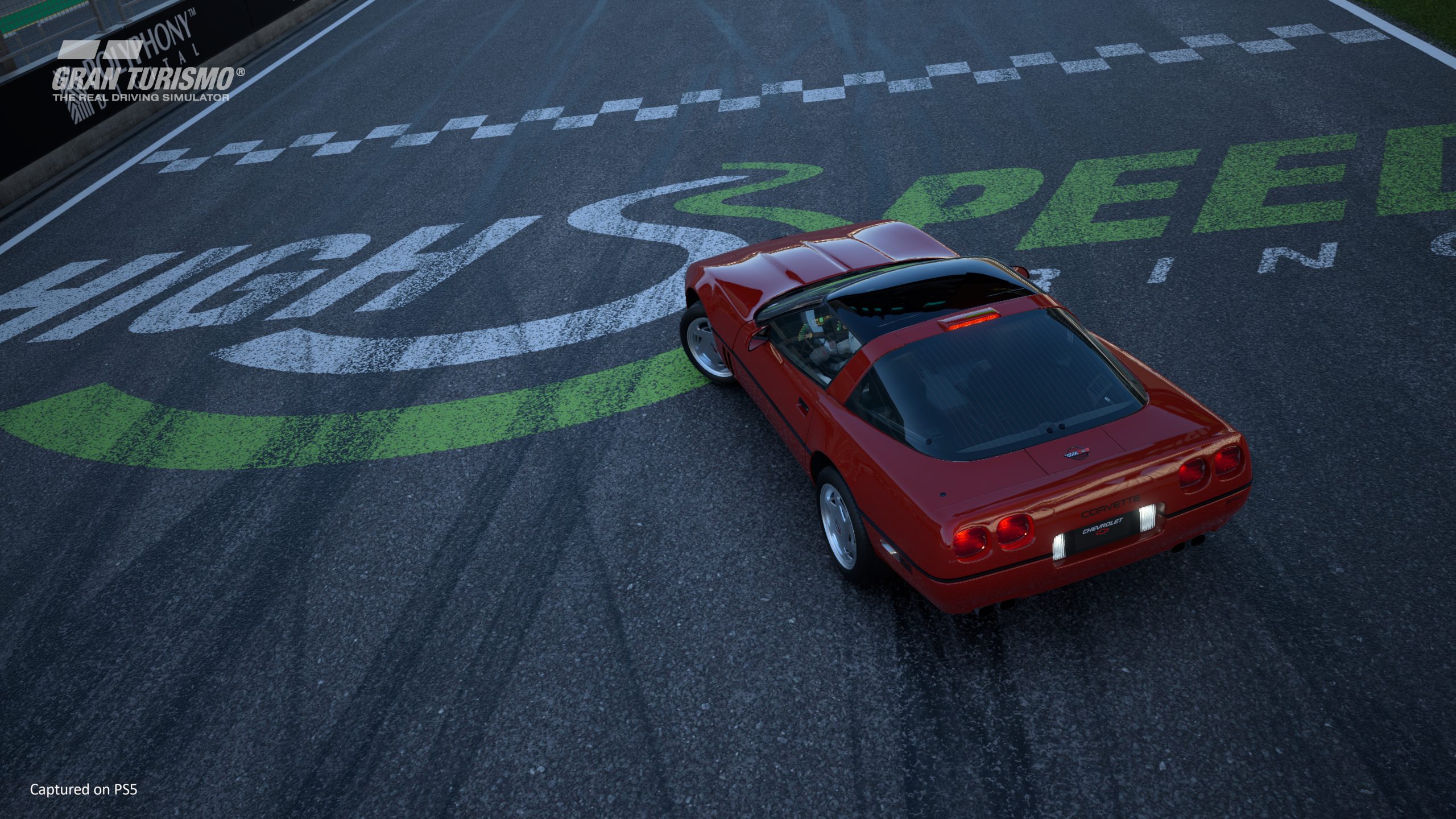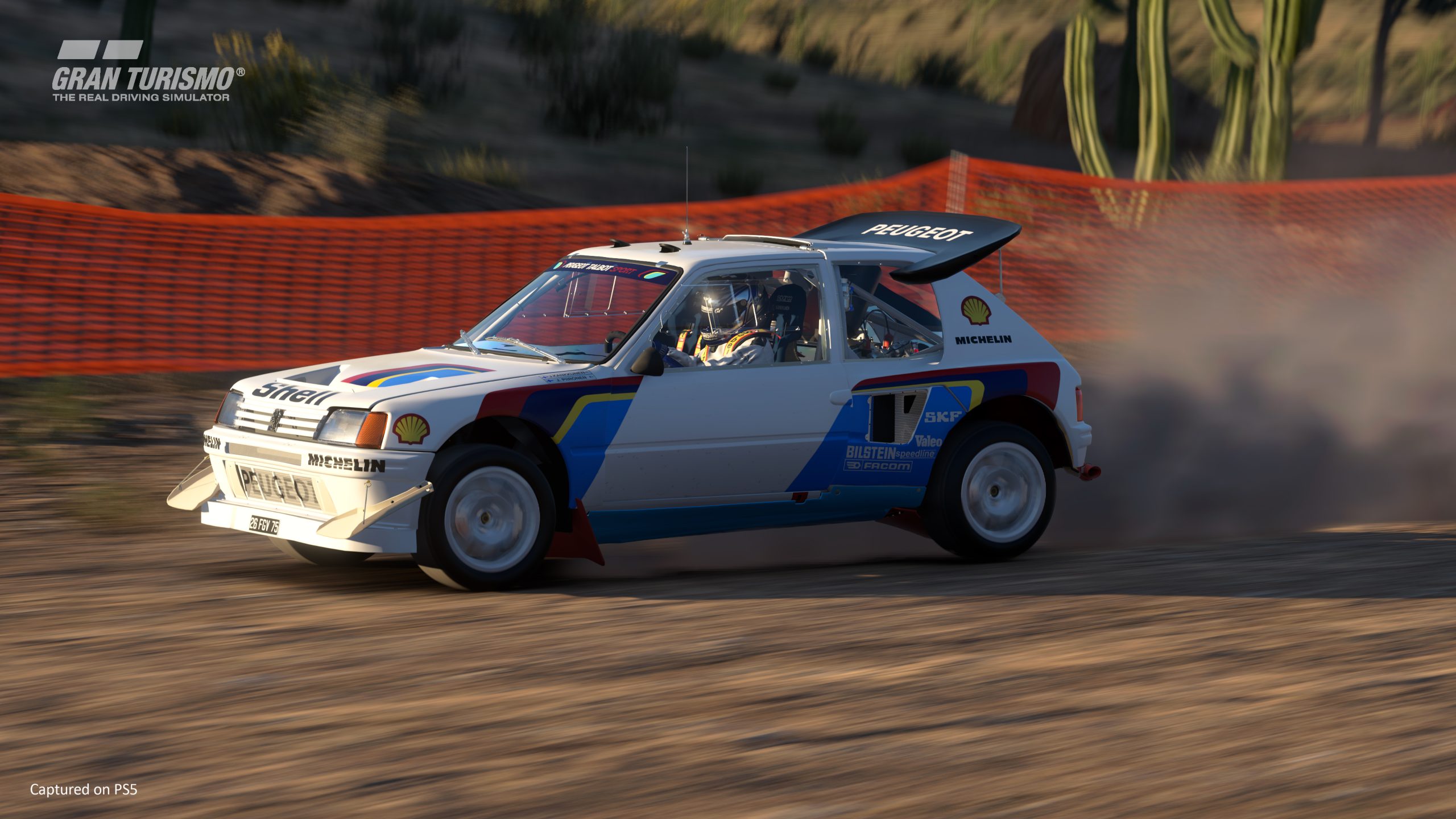
Gran Turismo 7 is on its final lap, approaching the finish line as the eighth mainline entry in the racing sim series. Series creator Kazunori Yamauchi has spent the span of the series providing a hyper-sim focus on car culture and racing. Gran Turismo 7 is a love letter to automotive and everything encompassing racing.
For me, a rich racing simulator that never ceases to hang on the minutiae of the history of car brands and romanticize the tuning of cars can be overbearing. There’s a clear central audience that this commitment speaks to. Oftentimes, however, I find myself taken out of the core gameplay loop and only to take part in extraneous modes and systems.
That said, when I’m making progress and racing down the tracks, I find it both exhilarating and very cathartic. Usually, I find myself playing arcade racers in my time and I’m constantly avoiding cars bumping into me, pulling off stunts, and flying over ramps. Gran Turismo 7 offers the exact opposite. The much slower, methodical racing speaks to me at times. Playing on PlayStation 5, Polyphony Digital offers the most immersive driving experience that doesn’t require additional peripheral investments.
Gran Turismo 7 is Yamauchi and Polyphony Digital’s latest venture once again showcases the wonderful world of global car racing. It lulls you in and welcomes you to the automotive community with open arms. As I unpacked the content-rich offering of Gran Turismo 7, I found myself navigating a dense world map where I could navigate between the Garage, World Circuits, Tuning Shop, and Multiplayer. If you are new to the franchise or only have a passable knowledge of Gran Turismo, the inner systems and menus can be overwhelming.

Thankfully, Gran Turismo 7 is approachable even for players who don’t consider themselves gearheads. The core structure of Gran Turismo 7 is all constructed through the new Gran Turismo Café. This serves as a central hub for players to jump into and be guided through the game as it opens up new opportunities. At first, the Gran Turismo Café will start you off by giving out a ‘Menu Book’ quest to collect cars by completing standard circuits. Gran Turismo Café continues and introduces Photo Mode, car tuning, and Missions.
As I worked towards completing Menu Book tasks, I became more familiar with all that Gran Turismo 7 offers for better or worse. While I found myself adoring the moments of racing down a track and hitting the checkered finish line, I was constantly interrupted. Gran Turismo 7 features so many sub-menus and options that I constantly had to navigate in order to get to the fun. Once I completed a Menu Book task, I had to return to the Gran Turismo Café and listen to Luca. The talking head of the cafe then goes on to discuss the history of established car brands. As someone who’s not entirely engaged in a history lesson, these segments are a bit of a slog to get through as often as they appear.
World Circuits provides a great assortment of tracks from around the world. With 34 tracks and 90 layouts spread across the Americas, Europe, Asia-Oceania, the diversity of tracks is welcome. Granted, much of them are raceways but in the spirit of Gran Turismo, they are fitting. The game also features a number of Championship races. These event-style races involve multi-track races, dolling out accumulative points.
One of my biggest worries was how intricate the tuning system would be in Gran Turismo 7. Some racing sims over-complicate the system and can be a complete turn-off for someone not invested in diving into those types of stats.
On the surface, Gran Turismo 7’s tuning is much of the same with numerous suspensions, transmissions, and other options. Thankfully, tuning is straightforward and easy to understand. The game presents each vehicle with a Performance Point rating. All tuning options will either increase or decrease that number. Certain tune-ups will also affect weight, power, and torque. Though, the better part of my focus laid on spending in-game currency to increase the Performance Point rating of my vehicles. Gran Turismo Liveries return. Those custom designs from recent titles can be imported over to Gran Turismo 7.

Gran Turismo 7’s multiplayer suite is fairly standard. Due to playing during the pre-release window, opening up my own lobby for other racers show poor results. Although I never saw a full lobby, I was able to experiment with the bones of the multiplayer offering. Creating a lobby meant I can set race types, car categories, select tracks, etc. Alternatively, I jumped into a few lobbies created by other players and got to complete a few circuits. The multiplayer will undoubtedly be more of a draw once the community can really take ownership of it.
Other notable modes include the License Center. Here, I could work towards gaining international licenses while learning more intricate gameplay maneuvers. I found it to be a useful time sink in the beginning. Though, over time it did become grating. Again, navigating through copious menus to get through to the next one took me out of the experience. Gran Turismo 7 finds ways to interrupt itself more times than I think is necessary.
My biggest takeaway while playing Gran Turismo 7 is that Polyphony Digital has a deep and technical understanding of how to utilize the PlayStation 5. I haven’t been this immersed in a racing game since sitting in an arcade, playing on a racing cabinet. Other racing games require a wheel, pedals, etc. to feel like you’re on the track. Gran Turismo 7 accomplishes that thanks to the DualSense controller.
Gran Turismo 7 leverages the adaptive triggers in ways that makese me feel like I was laying on the gas while racing down a straight and narrow. The break is tense and shakes as I lay down the trigger to get around a tight corner. From a haptic standpoint, there’s a lot going on inside the DualSense. A distinct lack of friction is felt in the controller as I race on smoother tracks. On a road or more bumpy terrain, I feel the suspension work its magic through the haptics. The dynamics at play are on the level of Astro’s Playroom. 3D Tempest Audio is also exceptional within the game. Spatial awareness is heightened and I often could hear approaching vehicles with pinpoint accuracy. There’s a lot of depth and layering within the audio and it delivers a punch when the thunderous engines begin roaring.
What stole the show for me was the motion-controlled steering. Gran Turismo 7 offers traditional settings ie: left stick or directional buttons to steer. The third option, the motion sensor function, allowed me to use the DualSense as a racing wheel. While Gran Turismo titles of the past include motion controls, the addition of haptics and adaptive triggers create a true sense of immersion. While I’d argue traditional settings are more practical for competitive play, DualSense functionality is really quite novel.

As for how the PlayStation 5 hardware impacts performance, I saw mixed results. Loading times are exceedingly fast and consistent when jumping into a race. The game provides a Ray Tracing mode, which makes the vehicles shimmer and stand out in a photo-realistic fashion in Photo Mode, the Garage, replays, and other settings where a vehicle is displayed. Otherwise, Ray Tracing is disabled, leaving only the standard 4K fidelity.
Alternatively, the Performance mode offers a clean 60FPS. Truthfully, since Ray Tracing is not consistent with core gameplay elements, it made the choice to prioritize frames much easier. The loss in visuals is very minimal based on my experience. While the vehicles and tracks do look nice in 4K, once my eyes ventured off to the main road I began noticing the tradeoffs. Many environments look static and flat. There’s a distinct lack of definition put into them. Therefore, the higher framerate became the obvious choice in my book.

Yamauchi is not only known for his deep love affair with cars and racing. The studio head along with his team also has an appreciation for music. There’s a stunning 300 tracklist included in Gran Turismo 7. A large bulk of tracks are new to me so the game has helped me discover some gripping tracks and artists.
To help compliment the music, Gran Turismo 7 has added the Music Rally mode. Rather than focus on competitive play, Music Rally is a laid-back experience. There’s no need to worry about breaking record times or coming in first. Instead, Music Rally put me in a relaxed state as I absorbed the audio and made the gameplay secondary. Now, the longevity of playing this mode is fairly finite. There’s not a lot of stickiness but it is a good place to start for new players nonetheless.
Gran Turismo 7 continues to cater to a specific. One who relishes in car culture and enjoys enveloping themselves in heavy sim gameplay and features. However, there is a lot integrated to bring in a more casual audience. That being said, a lot of those supplemental features may be a hindrance to the core experience of racing down a track. I felt as though for as much as I was driving, I had to spend too much time flipping through menus.
The utilization of the PlayStation 5 DualSense was enough to keep me coming back for hours upon hours. The combined force of haptic, adaptive triggers and motion controls gave me a driving experience I have been able to have without using a racing wheel kit or going to an arcade. These didn’t personally equate to making Gran Turismo 7 a marquee console experience, but it added a unique flavour I attached myself to.
Gran Turismo 7 releases on March 4th on PlayStation 4 and PlayStation 5. The title is available for $90 at Amazon.
MobileSyrup utilizes affiliate partnerships. These partnerships do not influence our editorial content, though we may earn a commission on purchases made via these links that helps fund the journalism provided free on our website.
Image Credit: Sony
MobileSyrup may earn a commission from purchases made via our links, which helps fund the journalism we provide free on our website. These links do not influence our editorial content. Support us here.


